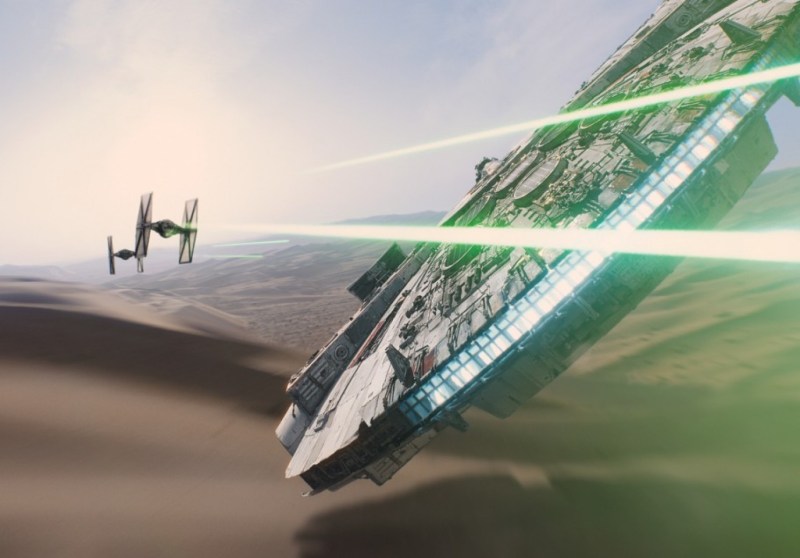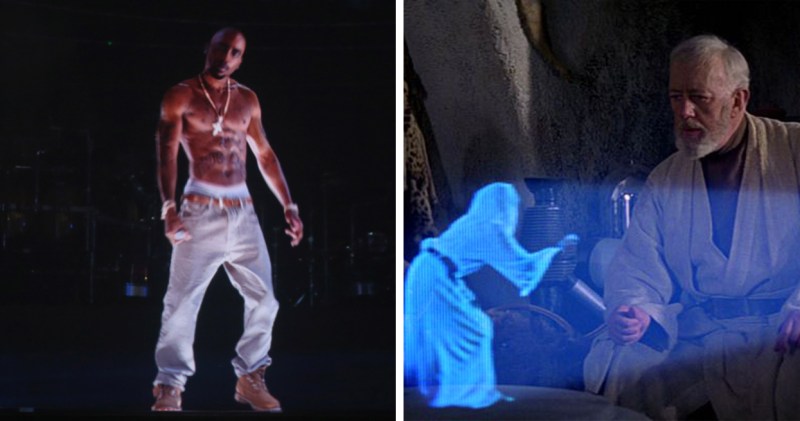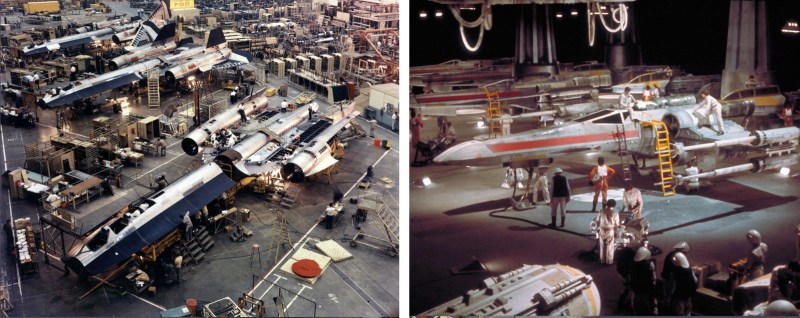
It’s been forty years since Star Wars hit theaters and became a worldwide phenomenon. Today, on May the Fourth, that fictional world seems much closer to a reality than it was when George Lucas wrote the script for A New Hope.
Between its flying passenger drones, 3D-printed offices, and planned Hyperloop system, cities like Dubai could easily be mistaken for Coruscant, a sprawling metropolis in the films that’s so big it covers the entire planet.
Boston Dynamic’s ATLAS humanoid robot doesn’t make quips like C3-PO or Rogue One’s K2-SO, but it sure runs like them. Prototypes of hoverbikes resembling the speeder bikes from Return of the Jedi may be up for sale later this year. EmDrive technology, similar to the Millennium Falcon’s hyperdrive, is now thought to be within eventual reach by NASA scientists—supported by rumors of early military space tests, according to Popular Mechanics.
Some gadgets in the Star Wars universe mirror ones from reality so closely that it’s uncanny. The filmmaker is quite the forward thinker, so it begs the question: was George Lucas prescient?

Many wondered if 3D projections featured in the iconic scene with Princess Leia were around the corner after Tupac’s hologram performance at Coachella in 2012. Not only are appearances like that common today, but telecom companies are teaming up to put that tech into smartphones, according to Vocativ.
Scientists recently re-created the Death Star laser, too. Instead of destroying planets, the futuristic beam could improve lasers being used in anti-drone defense systems, like the one just delivered to the U.S. Army, Washington Post reports. Companies like Boeing, Lockheed Martin, Northrop Grumman, Raytheon are all developing some form of a laser weapon.
Engadget reports a bionic prosthetic developed for wounded combat vets was named LUKE—a nod to the one-handed Skywalker.
Technology like LUKE, however, suggests the multi-billion dollar franchise was more of an influence than a prediction. Instead of Lucas having foresight, his magnum opus could have inspired today’s innovators and shaped their products in the process.
There’s no doubt at least a few Silicon Valley pioneers are Star Wars fans.

Mark Zuckerberg’s shown his love by dressing his dog and infant daughter up as characters from the films. He’s been such a high-profile fanboy taht the Facebook founder was treated to a Han Solo-inspired retort to his comment on The Force Awakens trailer just after its debut online. (“This looks amazing. I love Star Wars,” he wrote. “We know,” the Star Wars Official Facebook page replied.)
Elon Musk told the MIT AeroAstro Centennial Symposium audience in 2014 that Star Wars was the first film he ever saw. Musk’s SpaceX is arguably the most important company bringing Earthlings all a little closer to the reality of the type of intergalactic exploration portrayed in Star Wars. It’s mission to colonize Mars is the first step of in making mankind a “multi-planetary species.” The company recently made history by proving reused rockets to be possible, and there was a little Star Wars influence involved in that success. The recycled Falcon 9 rocket has extendable fins, which he called an “X-Wing” configuration, to help balance when landing, TechCrunch reports.
Then again, George Lucas is as much of an innovator as Musk, Zuckerberg, or any number of other Star Wars fans behind today’s technology. The filmmaker and his team invented many of the special effects required to pull off space battles and other stunts in the original films. To this date, Lucas has racked up 29 patents to his name.
The Star Wars creator may have been an inventor, but he also borrowed a lot from history. Ancient leaders and their empires inspired characters like Queen Amidala and Emperor Palpatine, according to Nancy Reagin’s Star Wars and History. Princessa Leia and the Rebel Alliance grew from Joan of Arc’s rebellion against Henry VI. Likewise, Han Solo’s journey from smuggler to hero parallels John Hancock, who first made a living skirting British blockades.

It doesn’t take a Jedi mind reader to see how battles in Star Wars were inspired by real conflicts, but that often spilled over in a more literal way during filming. Instead of dreaming of futuristic visions, the set designers used World War Two relics to make the most of their shoestring budgets. “In those days you could buy scrap airplanes from $60, and so I went around Britain buying up scrap aircraft, jet engines — all sorts of stuff. Out of that, we did most of the set dressing,” set decorator Roger Christian told Star Wars Insider.
The crew made most of the spaceships, robots, gadgets, and weapons from bits of old war machines and junkyard parts. Han Solo’s iconic blaster? That’s a Frankenstein-like amalgam of an antique Mauser Pistol, a German M-81 machine gun, and a few other parts. “Rather than have your slick streamlined ray guns, we took actual World War II machine guns and cannibalized one into another,” said production designer John Barry in an interview with historian Cole Horton.
This article was featured in the InsideHook newsletter. Sign up now.





















